Charndon
In 1775, the villages of Twyford and Charndon were enclosed. By 1825 the hamlet of Charndon and Poundon became part of the Twyford Parish.
A short description of Charndon from “A History of the County of Buckingham”: Volume 4. Originally published by Victoria County History, London, 1927.
CHARNDON MANOR ESTATE was held before the Norman Conquest by Eingar, one of Earl Harold’s men (Earl Harold Godwinson, later King Harold). In 1086, it was assessed at 10 hides (land to support 10 households) and held by Ralf de Fougères. It afterwards passed with the Twyford estate to Sophia Baroness Wenman. On her death in 1870, it descended with Haddenham Manor to Mr. Wenman Aubrey Wykeham Musgrave of Thame Park, Oxfordshire, who in 1927 was still one of the principal landowners, the other (within the last few years) being Mr. William Smith.
The hamlet of Charndon (Credendone, xi cent.; Chardone, Charendon, xiii cent.) lies about 2 miles south of Twyford. A Congregational chapel was built here in 1825.
Charndon Chapel
A Chapel was built in Charndon in 1881 and demolished in 2001 to be replaced by a residential property. Full details can be read in the Churches section.
Business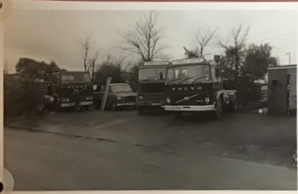
There was a transport business in Charndon, J G Griffin, originally called S F Markham, set up by Frank or Sid Markham and operated from Valley Farm. The business was continued by John Griffin whose daughter married Brian Connell. John’s son Brian continued the business with Brian Connell, so the business became Connell and Griffin. See invoices below.
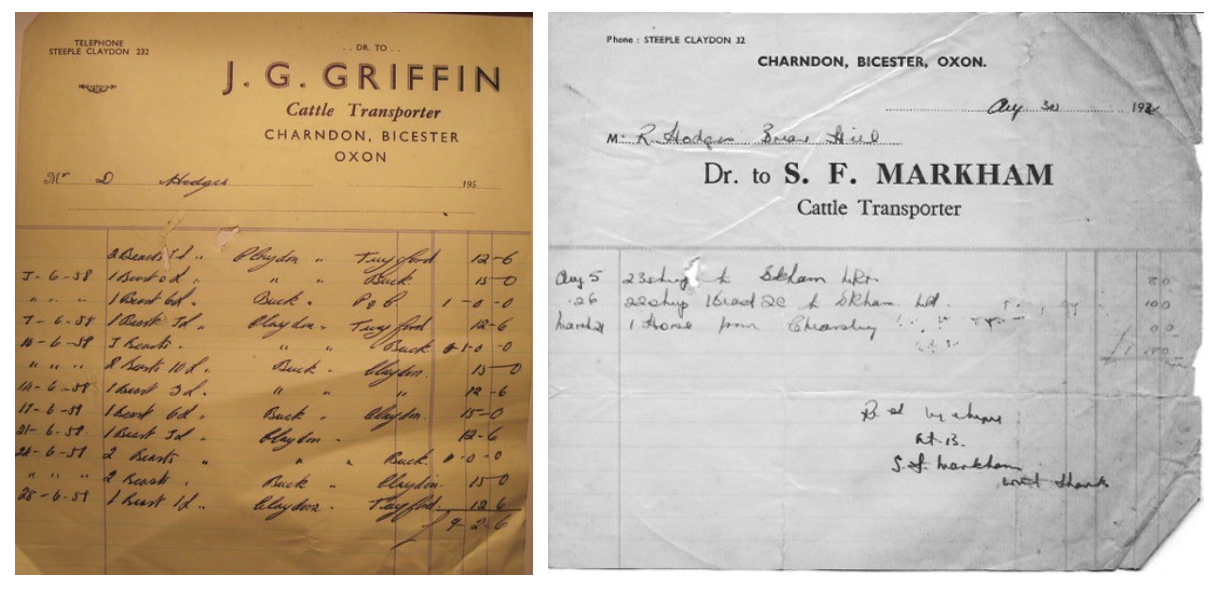
Invoices dated 1950s and 1930s
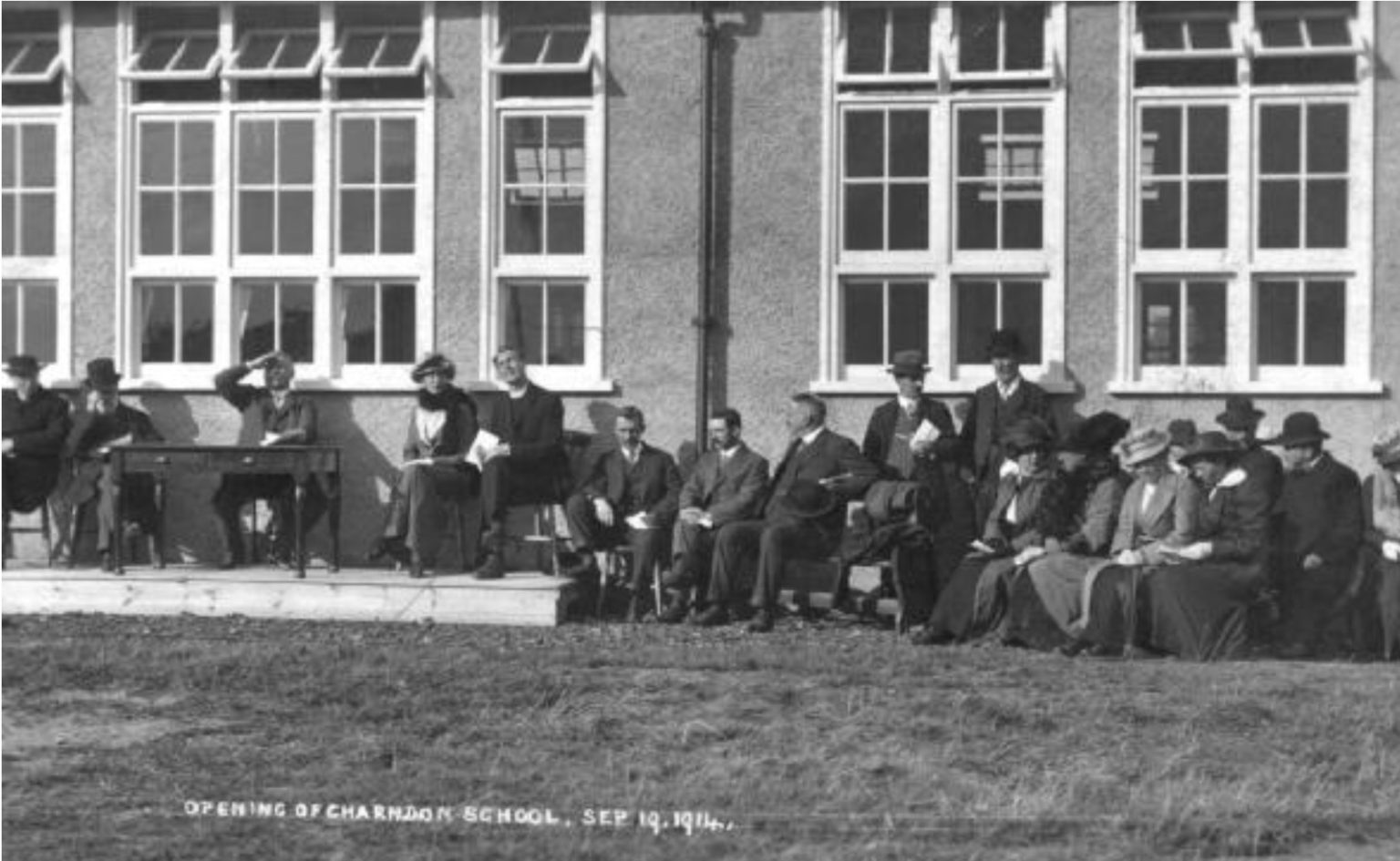
Opening of Charndon School – closed in 1980.
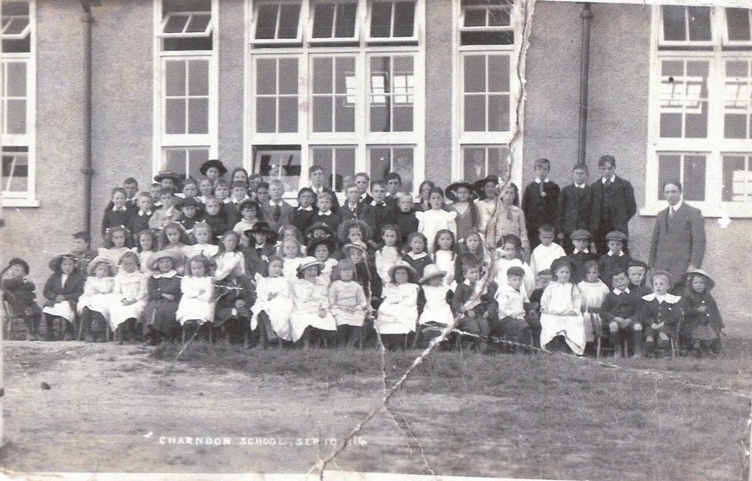
Children at Charndon School
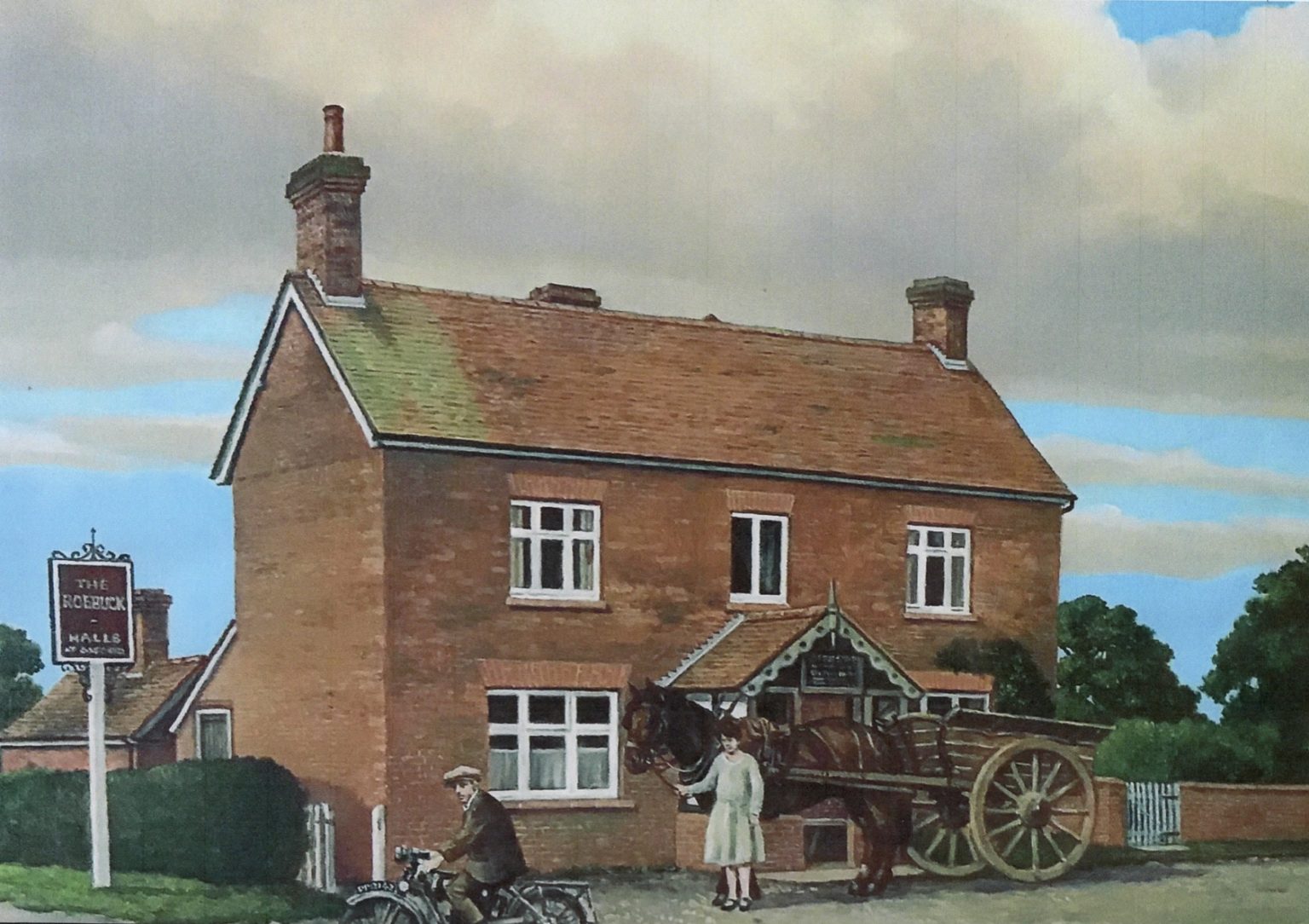
Charndon also had a pub called the Roebuck.
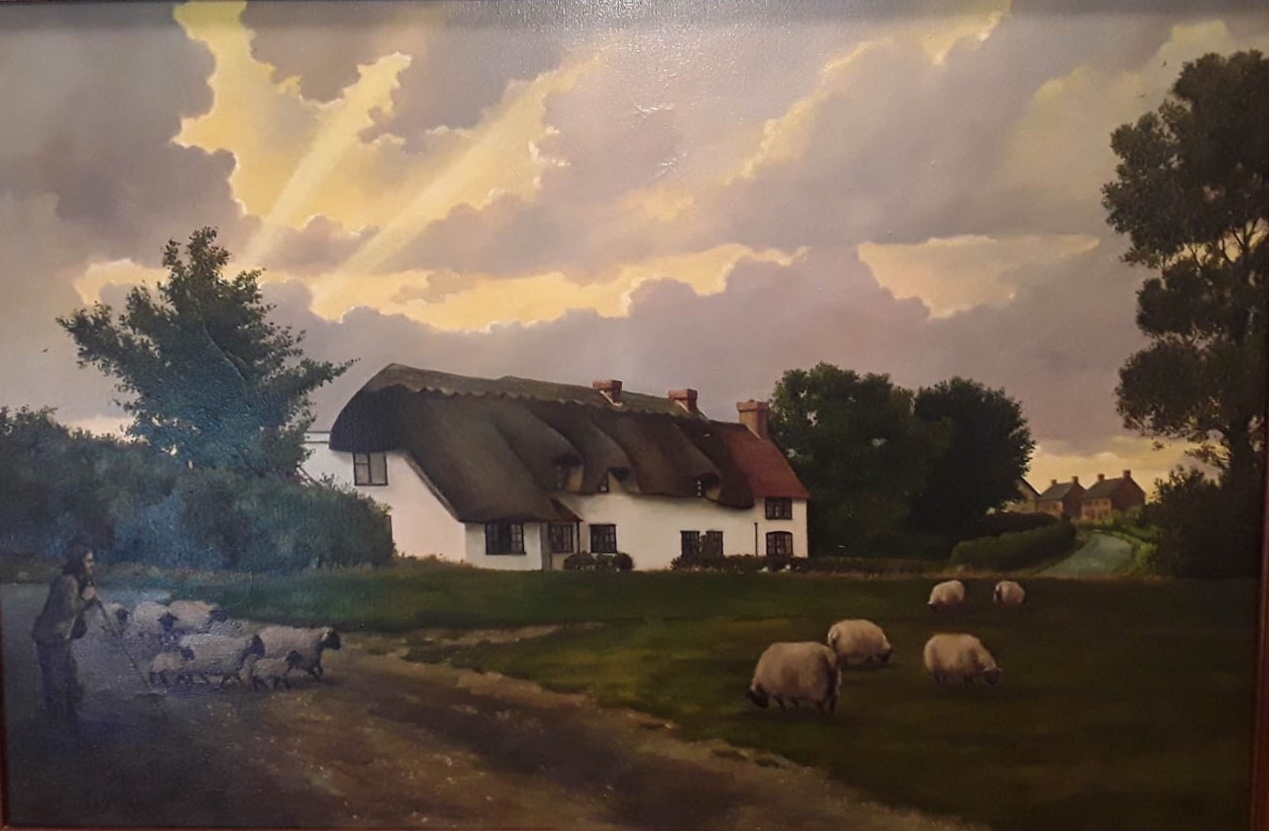
This thatched building was called the Long House, now replaced by a brick building.
